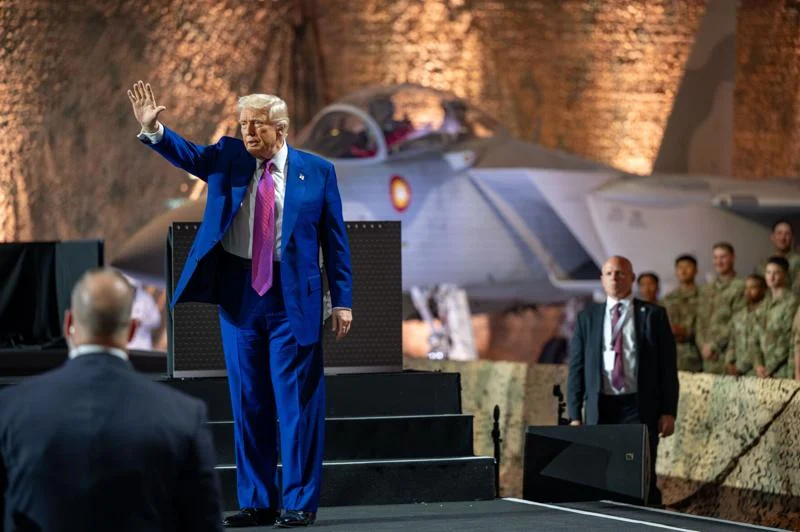After an attack on Saturday by U.S. forces against Iranian nuclear targets, Iranians could have several U.S. bases in the region in their sights for a retaliatory strike.
In Kuwait, only 78 miles across the Persian Gulf, is Camp Arifjan, the U.S. Army’s primary logistics base in the region and home to Patton Army Heliport.
The next closest base is Naval Support Activity Bahrain in Manama, which is the U.S. Navy’s primary base in the region. It is only 124 miles from Iran across the Persian Gulf and is home to the U.S. Naval Forces Central Command and the U.S. Fifth Fleet, along with five Sentinel class cutters of the U.S. Coast Guard of the Patrol Forces Southwest Asia command.
Two other U.S. bases are less than 200 miles from Iranian territory. Al Udeid Air Base in Qatar is the U.S. Air Force’s primary logistics hub in the region and has hosted detachments of bombers such as the B-1B and tanker aircraft.
Al Dhafra Air Base in the United Arab Emirates hosts rotating detachments of F-22 Raptor and other fighter aircraft and MQ-9 Reaper surveillance and attack UAVs.
In Iraq, Al Asad Airbase has already been the target of an Iranian attack in 2020 that was in retaliation for the killing of Iranian Revolutionary Guard leader, Qasem Soleimani by the U.S. in an attack by MQ-9 Reapers. It is now home to a battery of U.S. Patriot surface to air missiles.
Erbil Air Base, which is located in northern Iraq, was the target of several drone attacks by Iranian-aligned militants in 2021.
Iranian attacks could take the form of short-range ballistic missiles such as the Qiam 1, a derivative of the Russian-designed Scud missile with a range of approximately 500 miles. It can can carry a 1,650-pound, high explosive warhead.
Another possibility are the Iranian Shahed family of drones, such as the Shahed-136 (Persian for listen), a prop-driven loitering munition used by the Russians in the Ukraine War.
Another option would be to close the Strait of Hormuz which connect the Persian Gulf with the Arabian Sea. The strait is a vital artery of global commerce for the Gulf States and Iran to export their oil.
According to the U.S. Energy Information Agency, oil flow by supertankers through the strait averaged 20 million barrels per day or about 20% of global oil consumption.
The Iranians could close the strait with mines, something they have done in the past in the Gulf.
In 1987, the U.S. Navy escorted Kuwaiti tankers during the so-called “Tanker War” as part of the Iran-Iraq War as both sides targeted tankers in the Gulf with antiship missiles.
After a U.S. flagged Kuwaiti tanker and the frigate U.S.S. Samuel B. Roberts struck Iranian-laid mines, U.S. forces launched two series of retaliatory strikes, Operations Praying Mantis and Nimble Archer, against Iranian natural gas platforms and naval ships in the Gulf.
As previously reported by The Center Square, President Donald Trump announced that the U.S. military had “successfully” carried out strikes on three of Iran’s major nuclear sites, including Fordow. The strikes mark the first time the U.S. have carried out an attack inside Iran.
Multiple reports indicated six B-2 stealth bombers based out of Whiteman Air Force Base in Missouri were used to carry out attacks on Fordow, while 30 Tomahawk missiles were fired from nuclear submarines.






